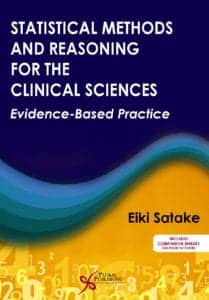
Written by Eiki Satake, PhD, associate professor of mathematics and statistics at Emerson College in Boston, Mass, the publication includes case studies on a companion website. The text is designed to help readers comprehend how the process of clinical research relates to the scientific method of problem solving. Readers will understand the importance of three key interrelated tasks involved in a research study: description (why it was done), explanation (what was done and to whom), and contextualization (how the results relate to other bodies of knowledge).
This text also examines:
• The two basic elements of statistical reasoning that constitute evidence-based practice: deductive inference (from effect to cause) and inductive inference (from cause to effect).
• Classical statistical methods—statistical terms/vocabulary, population parameters, and sampling methods—as well as descriptive statistical methods, including measures, correlation, and regression.
• The fundamentals of statistical inference that include testing hypotheses using a z-test, t-test, ANOVA, and MANOVA.
• The concept of probability, through various concrete examples and a step-by-step approach, which is a fundamental part of the clinical decision-making process.
• Evidence-based probabilistic methods called Minimum Bayes Factor (MBF) for measuring the strength of clinical evidence more precisely and as an alternative to classical testing hypotheses methods.
• Rationales and procedures of other statistical methods frequently seen in clinical literature, like meta-analysis, nonparametric methods, categorical analyses, and single subject designs.
The book distinguishes between the concepts of “statistical significance” and “clinical significance,” and emphasizes the value of scientific literacy in evidence-based practice.
Source: Plural Publishing





